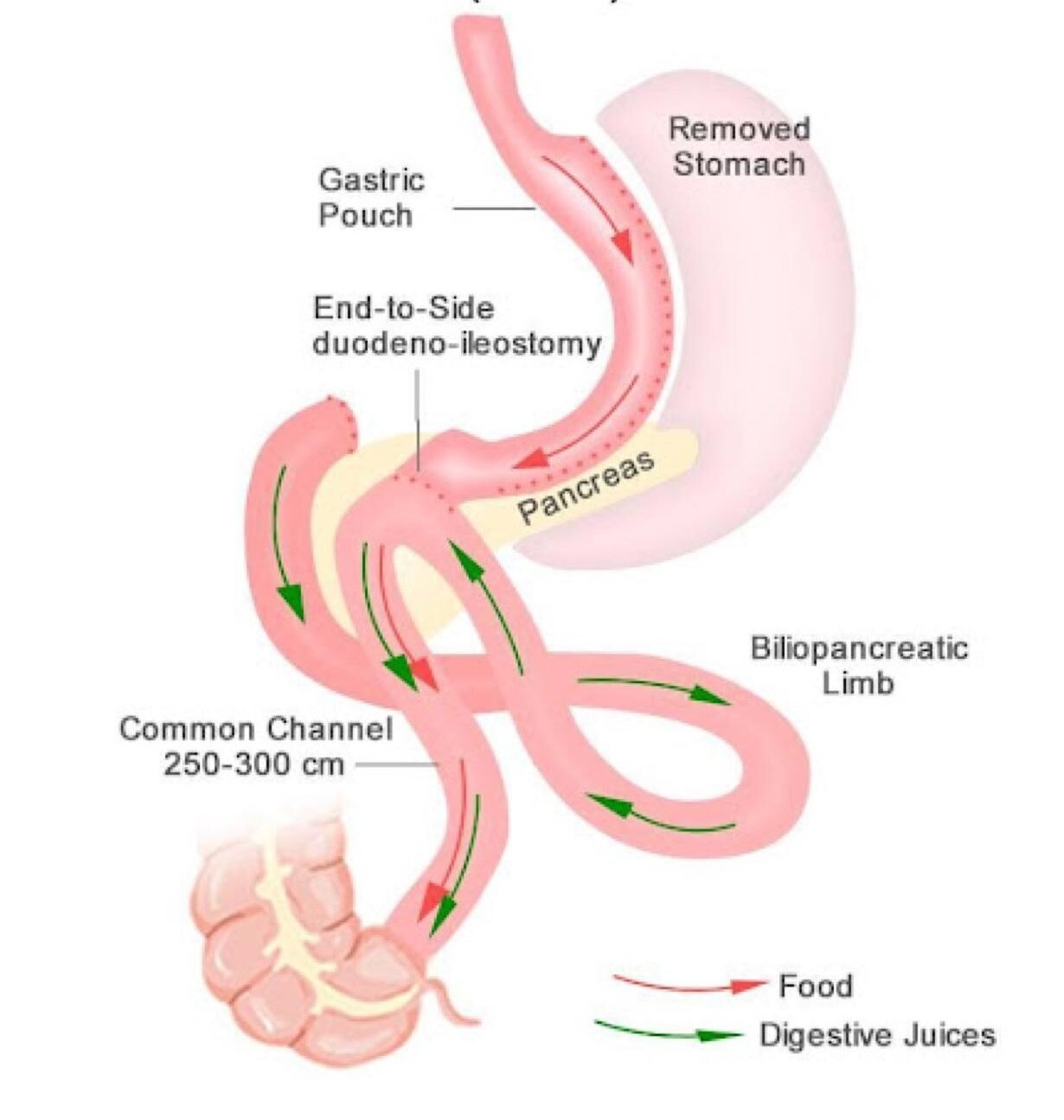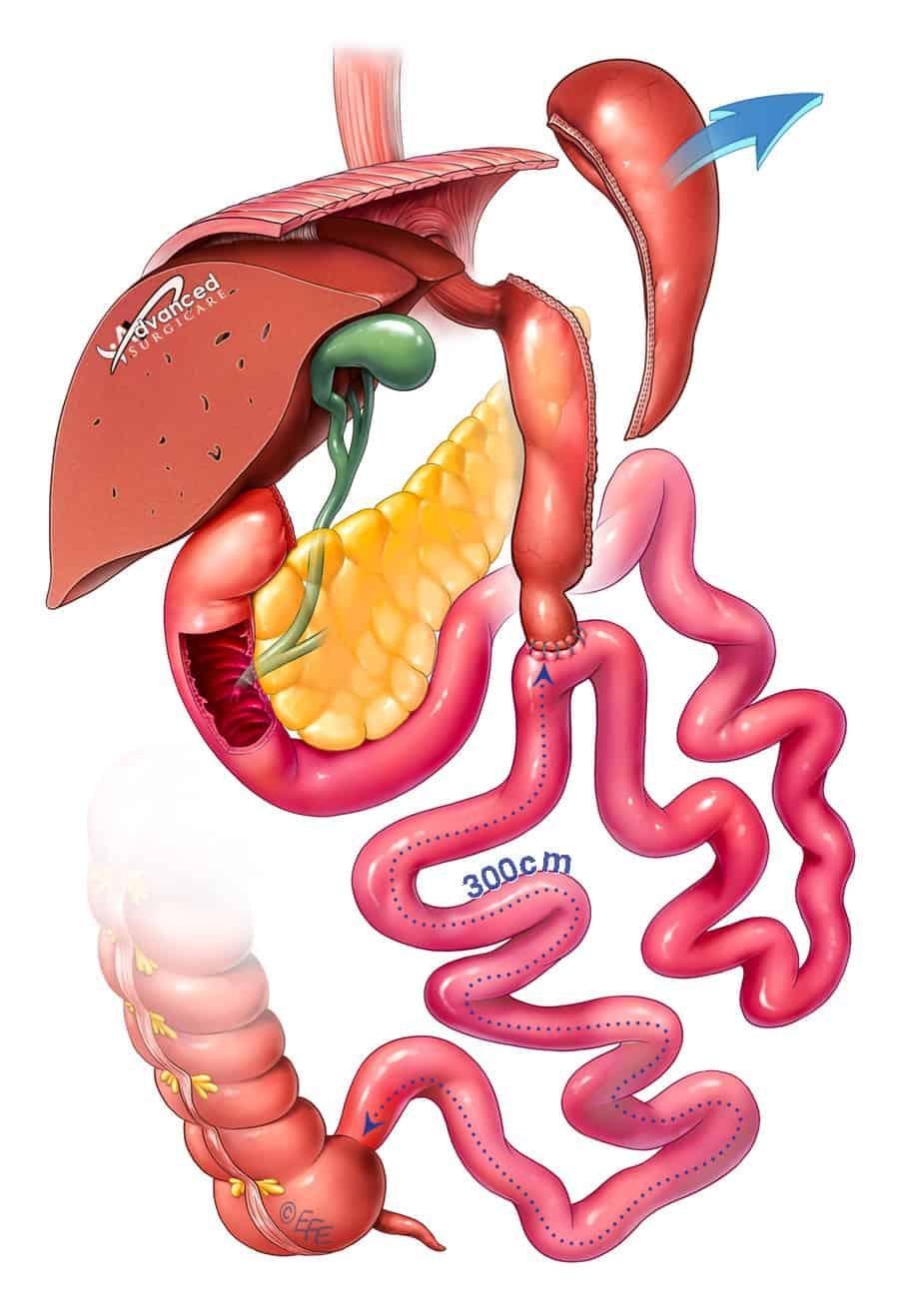Robotic SADI/SIPS Procedure
This procedure has two commonly used and interchangeable names. One name is SADI which stands for Single Anastomosis Duodeno-Ileo Bypass. The second name is SIPS which stands for Stomach Intestinal Pylorus Sparing Surgery.
SADI/SIPS Interchangeable Names
This procedure was first described in 2007 with the goal of combining two effective mechanisms of weight loss, restriction and malabsorption while eliminating the undesirable aspects of the gastric bypass and traditional duodenal switch.
SADI/SIPS Interchangeable Names
This procedure was first described in 2007 with the goal of combining two effective mechanisms of weight loss, restriction and malabsorption while eliminating the undesirable aspects of the gastric bypass and traditional duodenal switch.
What is SADI / SIPS?
A simple way of understanding the SADI is that it is a modified version of the Duodenal switch, that eliminates the need for a second anastomosis (intestinal connection).
When performed as a primary operation, weight loss is approximately 70-75% of excess body weight. This is higher than either the Sleeve Gastrectomy or Gastric Bypass.
In the United States, each year since 2015 this procedure has become more commonly performed and mainstream.
What is SADI / SIPS?
A simple way of understanding the SADI is that it is a modified version of the Duodenal switch, that eliminates the need for a second anastomosis (intestinal connection).
When performed as a primary operation, weight loss is approximately 70-75% of excess body weight. This is higher than either the Sleeve Gastrectomy or Gastric Bypass.
In the United States, each year since 2015 this procedure has become more commonly performed and mainstream.

Sleeve Gastrectomy and Duodeno-Ileo Connection
Sleeve Gastrectomy
Removal of most of the lateral portion of the stomach, leaving a tube-shaped stomach or “sleeve.” In this step, the stomach is surgically reshaped into a narrow tube, which greatly reduces the amount of food a person can eat at one time. It also lowers the production of hunger hormones such as ghrelin, naturally helping to decrease appetite. This restriction plays a vital role in reducing calorie intake and supporting long-term weight loss.
Duodeno-Ileo Connection
The first portion of the small bowel (duodenum) is divided and reconnected approximately halfway down the length of the intestine. This rerouting allows food to pass more quickly into the lower part of the small intestine (ileum), bypassing a significant section of the digestive tract. Because food meets digestive juices like bile and pancreatic enzymes much later than usual, the absorption of calories and nutrients is reduced. This combination of restriction and reduced absorption enhances weight loss and improves metabolism. The procedure is known as the Single Anastomosis Duodeno-Ileal bypass (SADI) because it involves only one surgical connection..
The first portion of the surgery, the sleeve gastrectomy, results in restricting the volume of food that can be taken at one time. This also leads to a significant reduction in appetite due to the loss of the portion of the stomach that secretes the hormone Ghrelin. Ghrelin is a powerful appetite stimulator; therefore, hunger levels decrease dramatically when it is no longer produced.
The second portion of the operation, the duodeno-ileo connection, limits the body’s ability to absorb all the calories that are ingested. This typically results in the average patient absorbing only 55-70% of the calories taken in each day.
Benefits and Risks of SADI / SIPS Surgery
Advantages
- Greater average weight loss that either the Sleeve Gastrectomy or Gastric Bypass
- Less “Dumping Syndrome” than with the Gastric Bypass
- Significantly reduced risk of internal hernia and anastomotic ulceration when compared to the Gastric Bypass or Duodenal Switch
- Very effective as a “Second Stage” operation for patients who have already had a Sleeve Gastrectomy and desire additional weight loss
Disadvantages
This operation causes malabsorption not only of calories but all the ingested contents, including protein, vitamins and nutrients. Therefore, it is very important that patients are compliant with taking the recommended vitamins and minerals.
Increased frequency of bowel movements. Most patients will experience an average of two to three times as many bowel movements daily as they normally have preoperatively.
Given that the procedure is relatively new (less than 10 years), there is limited long term data.

Although the two procedures are very similar, SADI is somewhat less invasive. This is because there is one intestinal reconnection rather than two as with a Duodenal Switch. This results in a much lower risk of internal hernia but unfortunately, because the procedure is new there is no long term data (>10 years) available at this time for effective comparison. Talk to your surgeon about the two options and he/she can guide you in making this choice.
How much weight can I expect to lose with a SADI / SIPS?
The first portion of the small bowel (duodenum) is divided and reconnected approximately halfway down the length of the intestine. This rerouting allows food to pass more quickly into the lower part of the small intestine (ileum), bypassing a significant section of the digestive tract. Because food meets digestive juices like bile and pancreatic enzymes much later than usual, the absorption of calories and nutrients is reduced. This combination of restriction and reduced absorption enhances weight loss and improves metabolism. The procedure is known as the Single Anastomosis Duodeno-Ileal bypass (SADI) because it involves only one surgical connection..
Our Locations
Choose your preferred location
Contact with us!
Have questions or concerns? Fill out the short form below to connect with us.
